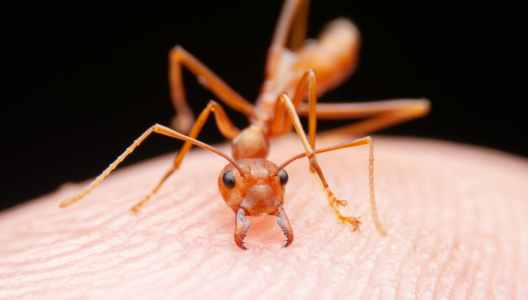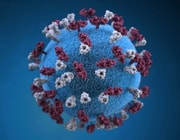Everyday substance endangers your pet's life: Owners take heed!
By
Gian T
- Replies 11
As the Australian landscape grapples with the pervasive threat of invasive fire ants, pet owners are urged to exercise increased caution.
These tiny invaders, which first reached our shores through Brisbane ports in 2001, have since increased, posing a significant risk not only to our native wildlife and agriculture but also to our pets.
The fire ant, recognised globally as one of the most destructive pests, is particularly aggressive toward ground-dwelling creatures.
Their impact extends to the agricultural sector, where they have been known to decimate crops and even kill livestock by attacking the roots of plants before they have a chance to flourish.
For pet owners, the concern is twofold. The National Fire Ant Eradication program has reassured the public that the bait used to combat these ants is non-toxic to pets.
Veterinary experts say this same bait can be deadly in high quantities.
The Small Animal Specialist Hospital Australia (SASH) has reported seeing a daily influx of animals treated for toxin-related issues.
A spokesperson for SASH has highlighted that the active ingredient in ant bait is a well-known toxin that can be lethal in large doses.
Dr Michael O'Donoghue reinforced this message, advising pet owners to keep their animals off grass and treat them with fire ant bait.
‘there's a strong association between the fire ant bait and the clinical science that we see,’ he said.
‘Toxins certainly do kill animals on a regular basis,'
'Keep them off the grass if you know fire ant bait has been applied on your property keep them off the grass,’
This warning comes in the wake of a distressing incident on the Gold Coast, where a dog in Currumbin Waters fell violently ill after ingesting what was believed to be fire ant poison.
The 12-year-old canine suffered from persistent vomiting but was fortunately rushed to the vet in time to be stabilised.
This case has prompted experts to proactively urge pet owners to protect their furry companions.
Fire ant populations are predominantly found in southern Queensland, with nests also discovered in South Murwillumbah and Wardell in northern NSW.
The economic implications of this infestation are staggering.
Recent data from the Australia Institute project that red imported fire ants could cost the Australian economy up to $22 billion by the 2040s.
The institute has criticised the federal government for underestimating the threat and underfunding eradication efforts, suggesting that a more substantial investment now could save billions in the long run.
‘Government commissioned modelling assesses only a 15-year time frame and ignores the $2.5bn per year in damages that fire ants will cause beyond 2035,’ the institute stated.
‘Extending the government commissioned analysis to a 20-year time frame shows every dollar invested in eradication will bring between $3 and $9 in benefits.’
‘This analysis shows that RIFA (Red Imported Fire Ants) will cost Australia more than $22b by the 2040s.'
'This means it is less costly to spend $200m or even $300m per year for the next 10 years, which would be between $2b and $3b, to eradicate RIFA now.’
The ants themselves are a menace not only because of their painful stings but also because of their mobility.
They can fly up to five kilometres, traverse various terrains, and hitch rides in shipping containers, soil, mulch, and other materials.
Since the initial outbreak in Southeast Queensland, the government has invested $690 million in containment and eradication efforts.
The issue escalated after a recent bathroom renovation, and the tenant hesitates to report it for fear of a rent increase. Read more about this story here.
 Have you encountered fire ants in your area? How do you protect your pets from potential poisoning? We’d love to hear your thoughts and opinions in the comments below.
Have you encountered fire ants in your area? How do you protect your pets from potential poisoning? We’d love to hear your thoughts and opinions in the comments below.
These tiny invaders, which first reached our shores through Brisbane ports in 2001, have since increased, posing a significant risk not only to our native wildlife and agriculture but also to our pets.
The fire ant, recognised globally as one of the most destructive pests, is particularly aggressive toward ground-dwelling creatures.
Their impact extends to the agricultural sector, where they have been known to decimate crops and even kill livestock by attacking the roots of plants before they have a chance to flourish.
For pet owners, the concern is twofold. The National Fire Ant Eradication program has reassured the public that the bait used to combat these ants is non-toxic to pets.
Veterinary experts say this same bait can be deadly in high quantities.
The Small Animal Specialist Hospital Australia (SASH) has reported seeing a daily influx of animals treated for toxin-related issues.
A spokesperson for SASH has highlighted that the active ingredient in ant bait is a well-known toxin that can be lethal in large doses.
Dr Michael O'Donoghue reinforced this message, advising pet owners to keep their animals off grass and treat them with fire ant bait.
‘there's a strong association between the fire ant bait and the clinical science that we see,’ he said.
‘Toxins certainly do kill animals on a regular basis,'
'Keep them off the grass if you know fire ant bait has been applied on your property keep them off the grass,’
This warning comes in the wake of a distressing incident on the Gold Coast, where a dog in Currumbin Waters fell violently ill after ingesting what was believed to be fire ant poison.
The 12-year-old canine suffered from persistent vomiting but was fortunately rushed to the vet in time to be stabilised.
This case has prompted experts to proactively urge pet owners to protect their furry companions.
Fire ant populations are predominantly found in southern Queensland, with nests also discovered in South Murwillumbah and Wardell in northern NSW.
The economic implications of this infestation are staggering.
Recent data from the Australia Institute project that red imported fire ants could cost the Australian economy up to $22 billion by the 2040s.
The institute has criticised the federal government for underestimating the threat and underfunding eradication efforts, suggesting that a more substantial investment now could save billions in the long run.
‘Government commissioned modelling assesses only a 15-year time frame and ignores the $2.5bn per year in damages that fire ants will cause beyond 2035,’ the institute stated.
‘Extending the government commissioned analysis to a 20-year time frame shows every dollar invested in eradication will bring between $3 and $9 in benefits.’
‘This analysis shows that RIFA (Red Imported Fire Ants) will cost Australia more than $22b by the 2040s.'
'This means it is less costly to spend $200m or even $300m per year for the next 10 years, which would be between $2b and $3b, to eradicate RIFA now.’
The ants themselves are a menace not only because of their painful stings but also because of their mobility.
They can fly up to five kilometres, traverse various terrains, and hitch rides in shipping containers, soil, mulch, and other materials.
Since the initial outbreak in Southeast Queensland, the government has invested $690 million in containment and eradication efforts.
In related news, a Bondi resident discovered mysterious piles of dirt in her bathroom, which was identified as a sign of ant infestation.The issue escalated after a recent bathroom renovation, and the tenant hesitates to report it for fear of a rent increase. Read more about this story here.
Key Takeaways
- Vets warned Australian pet owners about the potential dangers of fire ant bait, stating that in large doses, it can be toxic to pets.
- The invasive fire ant species introduced into Australia in 2001 significantly threaten wildlife, pets, and the agricultural industry.
- Authorities actively tried to eradicate fire ants through baiting, but there's concern that the baits could harm pets if consumed in large quantities.
- The economic impact of the red imported fire ants could reach up to $22 billion by the 2040s, prompting calls for greater funding and resources for eradication efforts.









